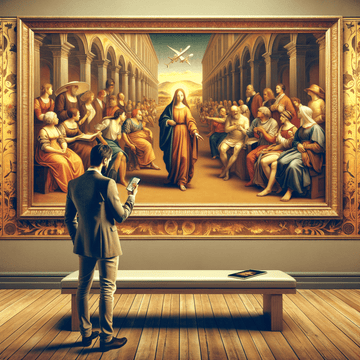From Traditional to Contemporary: The Evolution of Asian Art Styles | Metal Poster Art
Nov 28, 2024

Exploring the Evolution of Asian Art Styles: From Traditional to Contemporary
The Asian continent is rich with a variety of diverse cultures, traditions, and histories. This diversity is abundantly reflected in Asian art--an expansive domain that spans more than 5,000 years of history. Investigating the evolution of Asian art styles, from traditional to contemporary, reveals much about the historical and cultural changes over time. With a plethora of styles to explore, let's embark on this artistic journey.
Traditional Asian Art
Traditional Asian art is heavily influenced by cultural beliefs, religious ideologies, and philosophical thoughts. Significantly, the styles are often symbol-laden, drawing on nature-inspired themes and narratives from mythology, history, and literature.
Kano School (Japanese)
The Kano school, one of Japan's most famous schools of painting, is a perfect example of traditional art. Developed in the late 15th century, it evolved into a style characterized by bold, simple, and colorful designs, with nature and seasonal themes representing Zen Buddhism philosophies.
The Shift to Modern and Contemporary Asian Art
The transition from traditional to contemporary Asian art did not happen overnight. This journey was influenced by the West's industrialization and globalization, bringing more abstract and avant-garde styles. However, many contemporary Asian artists still blend traditional styles and techniques with these newer influences, creating a unique fusion of past and present.
Contemporary Asian Art
Contemporary Asian art is rooted in a cultural context marked by significant transformation and continues to evolve today. Embodied with a diverse range of expressions reflecting societal and individual concerns, the styles can be utterly abstract or subtly narrative.
Notably, contemporary Asian art is not limited to paintings and sculptures. It also encompasses a variety of mediums, including photography, installation, and digital art, often breaking down the barriers between different art forms.
Conclusion
The evolution of Asian art styles, from traditional to contemporary, reflects the richness and diversity of Asian cultures. Understanding this evolution allows us not only to appreciate the art itself but also offers a deeper understanding of Asian history, philosophies, and societies.
Interested in exploring more art like what we've discussed today? Our collection offers a diverse range of styles, including Kano School (Japanese) and beyond. Feel free to dive into our world of artistic wonders by visiting our collection. Whether you're looking to admire or to acquire, there's always something captivating waiting for you. We're excited to share our passion for art with you.




